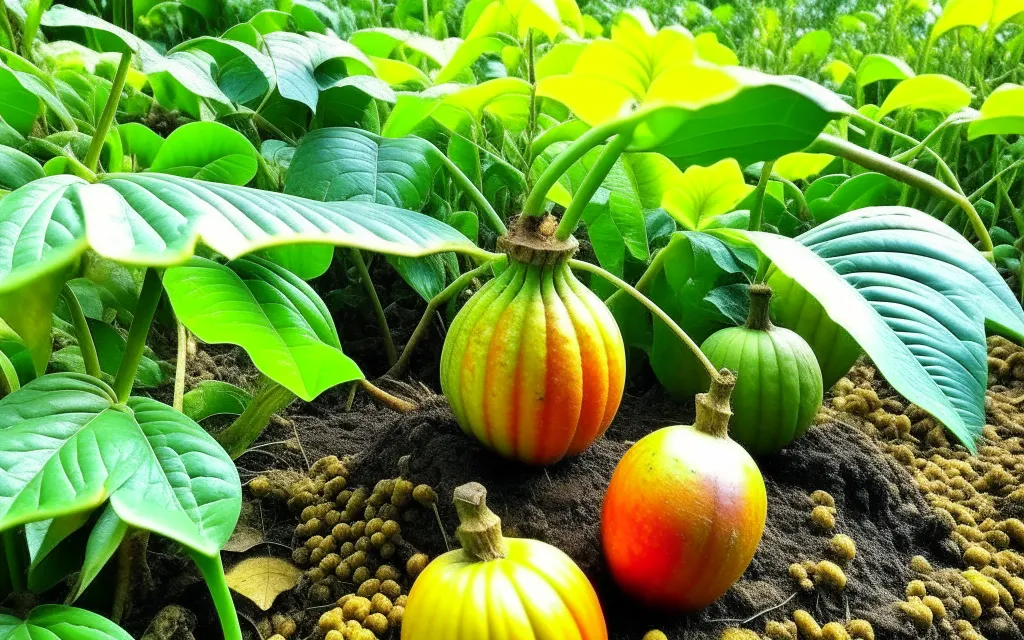
Growing Yacon: A Gardener’s Delight
Hey there, fellow garden enthusiasts! Today, I’m excited to chat about one of my favorite crops—Yacon. If you haven’t met this incredible plant yet, you’re in for a treat! Yacon (Smallanthus sonchifolius) is a perennial plant native to the Andes, renowned for its sweet, crunchy tubers that boast a unique taste. Not only are they delicious, but they’re also packed with health benefits, making them a wonderful addition to any garden.
Growing Yacon isn’t too complicated, but there are some general requirements to keep in mind. It thrives in well-drained soil with plenty of organic matter and loves a sunny spot—ideally, it needs at least 6 hours of sunlight each day. The growing season for Yacon is quite long, usually around 4 to 7 months, so it’s best to start in a warm climate or get a jumpstart indoors in cooler areas.
A Bit of Yacon History
Now, let’s take a quick jaunt through Yacon’s history! This plant has been cultivated in South America for centuries. The indigenous people valued it not just for its taste but also for its health benefits; its tubers are low in calories and rich in inulin, a type of prebiotic fiber that supports digestive health. Isn’t it amazing how a plant can be both tasty and beneficial?
Growing Yacon: Your Way!
When considering how to grow Yacon, you’ll find that versatility is part of its charm. You can cultivate it in traditional rows or opt for vertical gardening—great if space is limited. Vertical gardening not only looks stunning but also maximizes light exposure and airflow. Plus, what could be more satisfying than seeing your Yacon leaves reaching for the sky?
For those curious about Yacon variants, there are a few worth noting. The main types include:
– *Yacon White*: The classic variety with a crisp texture and sweet flavor.
– *Yacon Red*: This one’s a showstopper! It has striking red skin and a similarly sweet taste.
– *Yacon Purple*: Slightly denser and earthier, it’s perfect for those who enjoy a more robust flavor.
Companion Planting for Yacon: Grow Together!
Now that we’ve covered the basics, let’s dive into the benefits of companion planting for Yacon. So, what exactly is companion planting? Essentially, it’s the practice of growing different plants close together for mutual benefits—think of it like good neighborly advice but in the garden!
Companion planting can help improve soil health, ward off pests, and even enhance flavors. When growing Yacon, certain companions can make a real difference. So you’re probably wondering, “What are good companion plants for Yacon?” Let’s explore!
Top Companion Plants for Yacon
Plants to Avoid
You might be wondering if there are any plants to avoid when growing Yacon—I’m happy to report, there are none known! Yacon is quite forgiving in the garden, so as long as you’re planting it with helpful companions like sunflowers and beans, you should be golden.
Summary of Companion Planting
So, to wrap it all up, when planting Yacon, consider teaming it up with sunflowers and pole beans. Both not only play nice but enhance Yacon’s growth and flavor. Just ensure they’re spaced adequately—beans should be 12-18 inches apart from Yacon and a few feet away from the towering sunflowers to avoid any unwanted competition for sunlight.
With the right companions by its side, Yacon can flourish, making your garden not only bountiful but also a delightful gathering of colors and tastes. Happy gardening, friends! I can’t wait to hear about your own Yacon adventures!
Planting Guidelines for Companion Plants to Yacon
Hey there, fellow gardening enthusiast! I’m excited to chat with you about planting Yacon and its best companion plants. Whether you’re a seasoned gardener or just getting your hands dirty, understanding companion planting can make a world of difference. Let’s dig into the specific spacing recommendations and tips for various plants that can thrive alongside Yacon.
General Rules for Spacing
When planting companion plants near Yacon, it’s essential to consider their growth habits. Here are some general guidelines:
Guidelines for Tall Companions
When you’re dealing with tall companions, consider planting them at least 24-36 inches away from Yacon. This gives them enough space to reach for the sky without overshadowing our precious Yacon.
Guidelines for Low-Growing Companions
Low-growing plants can comfortably sit around 6-12 inches from Yacon. They’re perfect for filling in spaces and can provide excellent ground cover.
Guidelines for Strongly Aromatic Companions
Plants that are aromatic can deter pests and enhance the flavor of nearby plants. For these, spacing them around 12-18 inches is ideal.
Guidelines for Nutrient-Heavy Feeders
Nutrient-hungry plants should be spaced 18-24 inches away from Yacon, as they’ll require more nutrients and may compete with your Yacon if planted too close.
Guidelines for Spreading or Vining Companions
If you’re considering vining plants, give them plenty of space—about 24-36 inches away from Yacon. This way, they won’t choke out the Yacon plants as they spread.
Adjusting Based on Garden Conditions
It’s crucial to adjust these guidelines based on your specific garden conditions. Factors like soil fertility, sunlight, and moisture levels can influence how closely you can plant. Plus, the mature size of your chosen companion plants plays a big role. So keep an eye on their growth and feel free to adapt as needed!
Summary: Plant Pairing Suggestions
Sunflowers
Sunflowers, with their towering presence and vibrant colors, aren’t just eye candy. They also attract beneficial insects. Besides Yacon, they pair well with:
Beans
Beans are fantastic for enhancing your garden. They’re nitrogen-fixers and work wonderfully alongside Yacon. Other good companions for beans include:
Happy gardening! May your Yacon thrive surrounded by a vibrant community of companions.

Leave a Reply